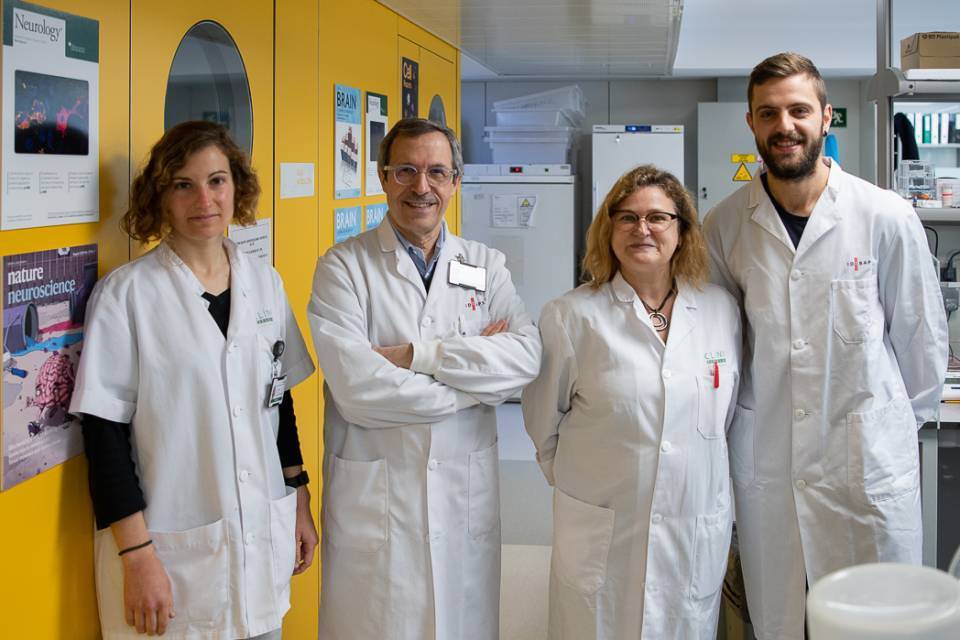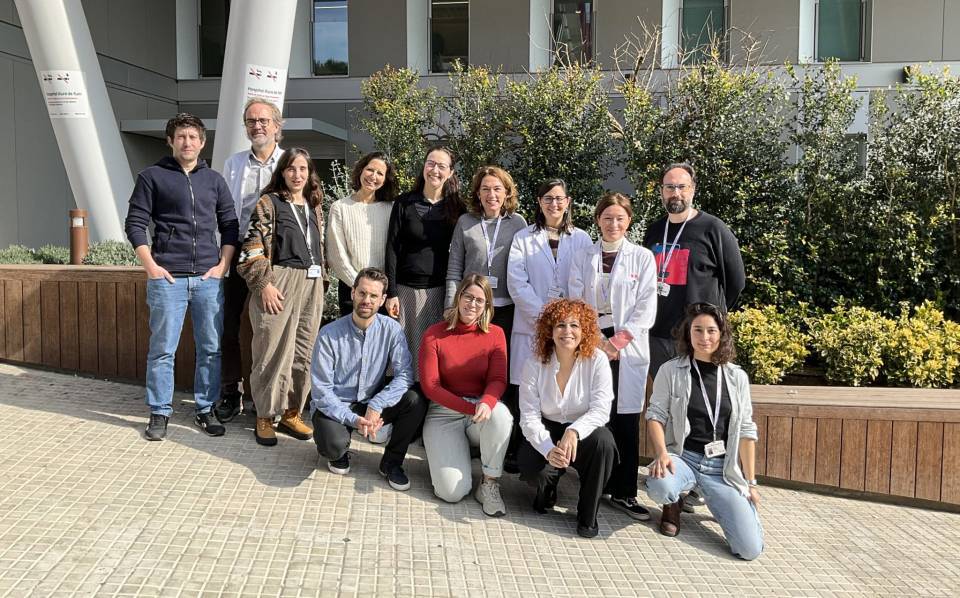A study led by Lídia Sabater and Josep Dalmau, from the Clínic IDIBAPS research group in Pathogenesis of autoimmune neuronal disorders has described a new type of autoimmune encephalitis that was unknown to date, anti-Gluk2 encephalitis. The first-named authors of the study, which has been published in the journal Annals of Neurology, are Jon Landa and Mar Guasp, from the same research group. The study was partially funded by La Caixa Foundation.
Autoimmune encephalitis is the name of a set of inflammatory disorders of the central nervous system in which the immune system attacks by error proteins from the patient’s own body, in this case neurotransmitter receptors or neuronal surface proteins. The action of these autoantibodies prevents these proteins from functioning correctly, which can cause the appearance of neuro-psychiatric symptoms, for example behavioural changes, psychosis, convulsions, and cognitive and memory deficits. They can affect people of any age with some of the subtypes affecting mainly children and young adults, and they represent a third of all the cases of encephalitis that occur around the world.
Until now, 16 different types of autoimmune encephalitis that affect the central nervous system have been described. Ten were discovered by studies led by Dr Josep Dalmau; four in the phase initiated in 2011 at the Clínic-IDIBAPS. This latest discovery adds a new autoimmune encephalitis to the list.
“We had a group of patients without a clear diagnosis but with symptoms in common. Their cerebellum was affected, which is a part of the brain that controls balance and movement. The patients presented with vomiting, headaches and gait instability, explains Josep Dalmau, who is also an ICREA researcher and professor at the University of Barcelona. “What we have discovered is that these patients produce autoantibodies against a Kainate receptor subunit, known as Gluk2, and that these autoantibodies alter the levels and functioning of the receptors and, therefore, can be the cause of the clinical symptoms”.
In a second part of the study, conducted in collaboration with the Neurophysiology group directed by Xavier Gasull, it was demonstrated that the autoantibodies also alter the electrical impulses that facilitate the communication between neurons.
“The Kainate receptors, together with AMPA and NMDA receptors, belong to the ionotropic glutamate receptors family,” explains Lídia Sabater. Dr Dalmau’s team already identified NMDA receptor autoantibodies in 2007 and AMPA receptor autoantibodies in 2009. “Because the AMPA, NMDA and Kainate receptors are very similar to each other, we were not surprised to find out that autoantibodies against the latter also exist”, concludes Sabater.
To date, it was considered that patients with anti-GluK2 encephalitis had an “idiopathic” or “probably viral” encephalitis and so they were not receiving adequate immunotherapy. This study is facilitating recognition of the syndrome and the rapid use of immunotherapy.
Article reference
Encephalitis with Autoantibodies against the Glutamate Kainate Receptors GluK2
Jon Landa, Mar Guasp, Federico Míguez-Cabello, Joana Guimarães, Takayasu Mishima, Fumiko Oda, Frauke Zipp, Vladimir Krajinovic, Peter Fuhr, Jérôme Honnorat, Maarten Titulaer, Mateus Simabukuro, Jesus Planagumà, Eugenia Martínez-Hernández, Thais Armangué, Albert Saiz, Xavier Gasull, David Soto, Francesc Graus, Lidia Sabater, Josep Dalmau
Ann Neurol. 2021 May 5. doi: 10.1002/ana.26098.




